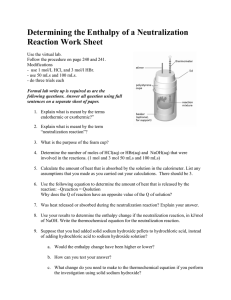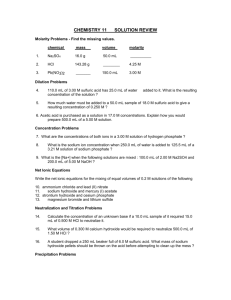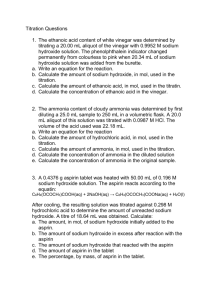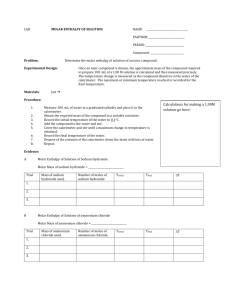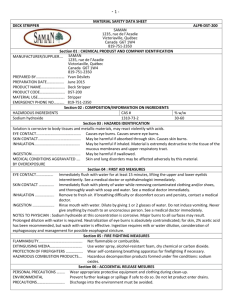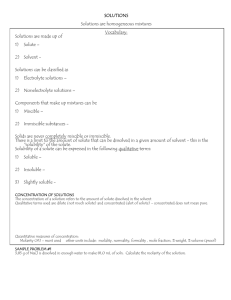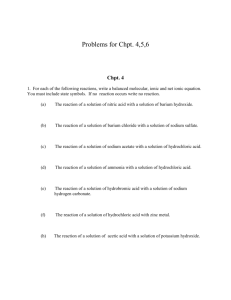lab handout
advertisement
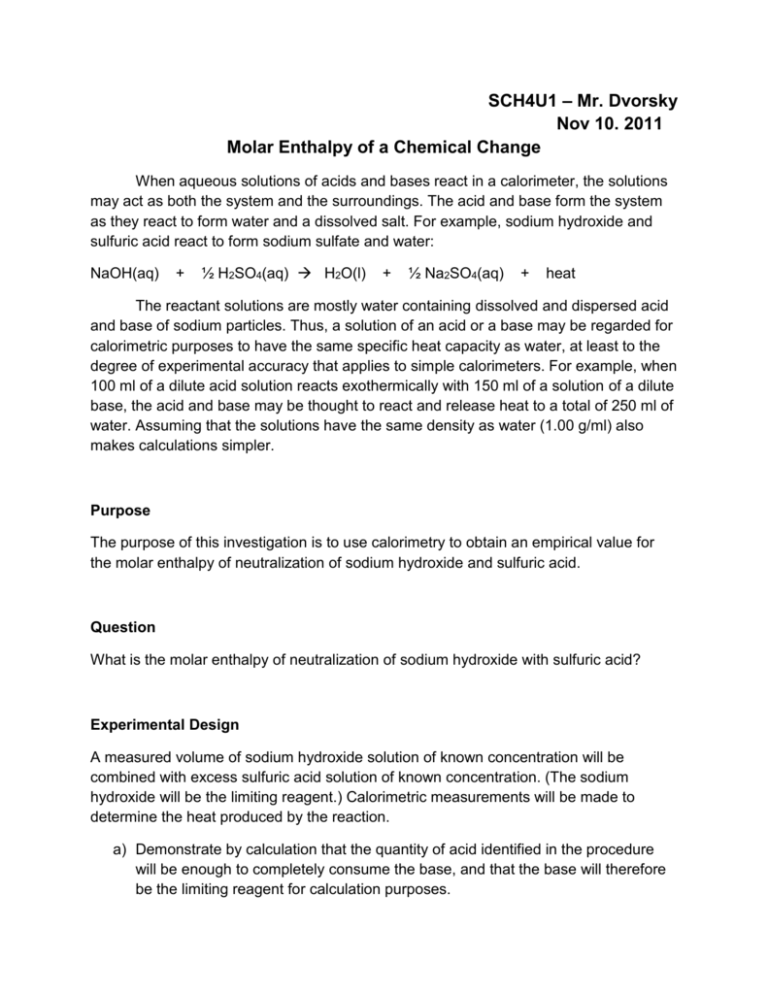
SCH4U1 – Mr. Dvorsky Nov 10. 2011 Molar Enthalpy of a Chemical Change When aqueous solutions of acids and bases react in a calorimeter, the solutions may act as both the system and the surroundings. The acid and base form the system as they react to form water and a dissolved salt. For example, sodium hydroxide and sulfuric acid react to form sodium sulfate and water: NaOH(aq) + ½ H2SO4(aq) H2O(l) + ½ Na2SO4(aq) + heat The reactant solutions are mostly water containing dissolved and dispersed acid and base of sodium particles. Thus, a solution of an acid or a base may be regarded for calorimetric purposes to have the same specific heat capacity as water, at least to the degree of experimental accuracy that applies to simple calorimeters. For example, when 100 ml of a dilute acid solution reacts exothermically with 150 ml of a solution of a dilute base, the acid and base may be thought to react and release heat to a total of 250 ml of water. Assuming that the solutions have the same density as water (1.00 g/ml) also makes calculations simpler. Purpose The purpose of this investigation is to use calorimetry to obtain an empirical value for the molar enthalpy of neutralization of sodium hydroxide and sulfuric acid. Question What is the molar enthalpy of neutralization of sodium hydroxide with sulfuric acid? Experimental Design A measured volume of sodium hydroxide solution of known concentration will be combined with excess sulfuric acid solution of known concentration. (The sodium hydroxide will be the limiting reagent.) Calorimetric measurements will be made to determine the heat produced by the reaction. a) Demonstrate by calculation that the quantity of acid identified in the procedure will be enough to completely consume the base, and that the base will therefore be the limiting reagent for calculation purposes. Materials eye protection 1.0 mol/l sodium hydroxide solution 1.0 mol/l sulfuric acid solution thermometer calorimeter two 100-ml graduate cylinders Procedure 1. Add 50 ml of 1.0 mol/l sodium hydroxide solution to a calorimeter. Measure and records its temperature. 2. Measure and record the temperature of a 30 ml sample of 1.0 mol/L sulfuric acid solution in a graduate cylinder. 3. Carefully add the acid to the base, stiring slowly with the thermometer. Measure and record the maximum temperature obtained. Analysis b) Calculate: i) The masses of acid and base solutions ii) The temperature changes in the acid and base solutions iii) The total heat absorbed by the calorimetric liquids (acid and base); iv) The amount of base (in moles) that reacted v) The molar enthalpy of neutralization of sodium hydroxide. Evaluation c) Calculation a percentage difference by comparing your experimental values and the accepted values for enthalpy of neutralization with respect to sodium hydroxide (-56 KJ/mol). d) Suggest any sources of experimental error in this investigation. Synthesis e) What would have been the effect on the calculated enthalpy of reaction if you had used i) 100 ml of sulfuric acid solution? Explain. ii) 20 ml of sulfuric acid solution? Explain.
